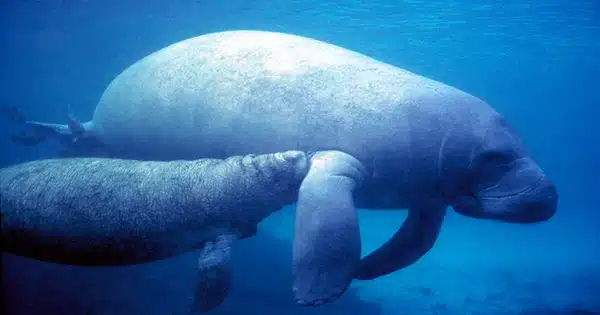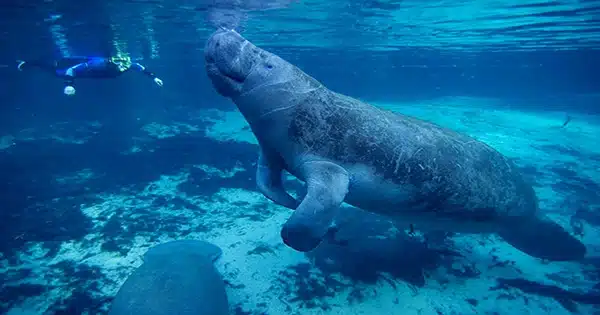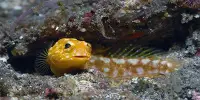According to a new study, the endangered Antillean manatee faces an increasing threat from boat collisions in Belize, raising concerns about the survival of what was previously thought to be a rather healthy population.
There are approximately 1,000 manatees in Belize. However, as tourism has grown in Belize in recent decades, there has been a significant increase in boat traffic, making boat hits an increasingly common source of manatee deaths and injuries.
The new study, which was published in Endangered Species Research on June 1st, used 25 years of data on manatee strandings (dead or injured animals), six aerial surveys of the manatee population, and two decades of boat registration data to estimate the effects of increased boat traffic on the manatee population.
Celeshia Guy Galves, currently at the Clearwater Marine Aquarium Research Institute in Belize, led the study as a doctoral student in the UC Santa Cruz Coastal Science and Policy Program.

“This work has been shared with Belizean policymakers and will directly contribute to conservation planning, including protecting key areas for manatees such as the Belize River Mouth and the Placencia Lagoon,” Galves added.
Galves discovered that as the number of boats on the water increased over time, the number of manatee strandings caused by boat hits climbed from 1 to 4 per year in the late 1990s and early 2000s to 10 to 17 per year by the late 2010s. Strandings were more common in regions with heavy boat activity, dense human populations, and mangrove ecosystems.
“We knew that boat strikes were happening, but this study provides strong quantitative evidence of boat strikes as an increasing source of mortality for manatees in Belize, and it shows the areas where the risk is greatest,” said co-author Marm Kilpatrick, a professor of ecology and evolutionary biology at UC Santa Cruz. “These findings serve as the foundation for conservation measures that can be implemented to reduce risk.”
The authors recommend that conservation efforts focus on limiting the number of boats and their speeds in areas where manatees are abundant. More protected areas with restrictions on boat traffic, such as places designated for non-motorized boating or restricted access, as well as speed restrictions in shallow seagrass habitats, are high priorities for conservation interventions.
The Antillean manatee, like the Florida manatee, is a subspecies of the West Indian manatee. Threats to the Antillean manatee population include habitat deterioration and loss, poaching, pollution, and entanglement in fishing gear, in addition to boat collisions.
Celeshia Galves and her husband, co-author Jamal Galves, both work on manatee conservation at Belize’s Clearwater Marine Aquarium Research Institute, and Jamal Galvez is a 2023 UCSC Coastal Science and Policy Program alumnus. Nicole Auil Gomez of the Wildlife Conservation Society in Belize, Don Croll, professor of ecology and evolutionary biology at UCSC, and Kelly Zilliacus, a research expert in Croll’s Conservation Action Lab at UCSC, are also co-authors.















